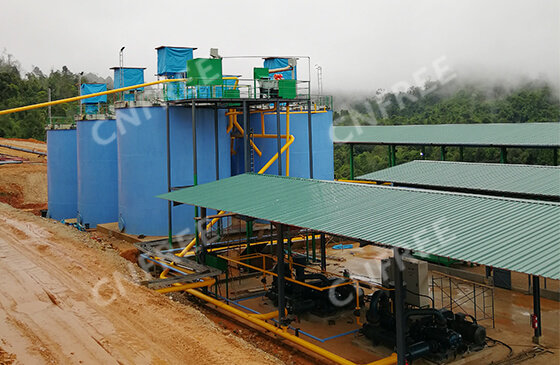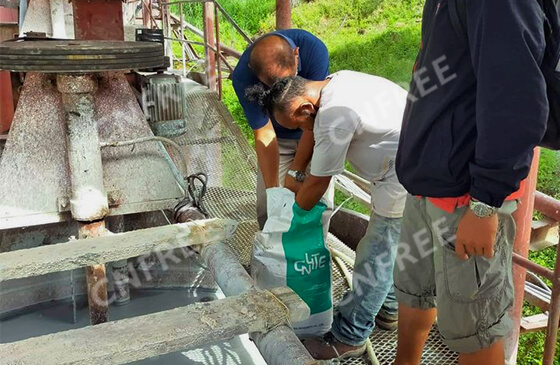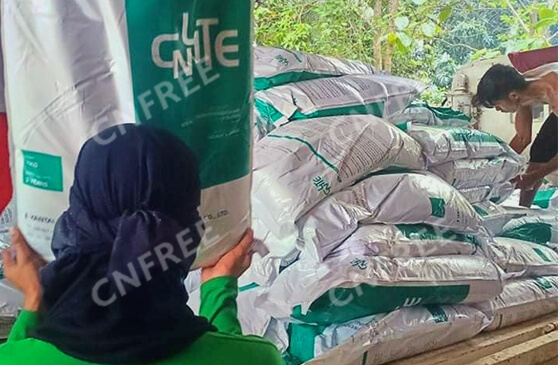2020-12-23 Views:5958
Warm Tip: If you want to know more information, like quotation, products, solutions, etc., please Click here ,and contact us online.

Cyanidation is a widely used gold recovery method in gold mines. Gold cyanidation method started in 1887 and has a history of more than 100 years. Although about 85% of the world’s gold is produced by cyanidation method, the severe toxicity produced by the cyanidation method seriously endangers the environment and human health.
In order to reduce environmental pollution, many scholars have carried out research on cyanide-free gold recovery methods. The most studied cyanide-free gold recovery methods include water chlorination, bromination and iodination, thiosulfate, thiourea and cyanide substitute gold recovery methods.
The gold leaching chemical reaction equation of this cyanide-free gold recovery method is as follows:
2Au+3Cl2+2HCl→2HauCl4
The reaction shows that gold is oxidized by chlorine and combined with chloride ions, so it is called the water chlorination gold leaching method. The main oxidants used in the water chlorination process are chlorine and its oxyacid salts. Due to the high activity of chlorine, there is no passivation problem on the surface of gold particles. Therefore, the gold leaching rate is much faster than that of cyanidation method.
The dissolution reaction of gold in bromine-bromide is as follows:
2Au+3Br2+2Br-→2AuBr4-
The mechanism of bromine -bromide leaching is similar to that of chlorine –chloride.
The study of gold recovery from primary ore by bromine-sodium bromide solution immersion method shows that the leaching rate of gold reaches 82% after immersion for 15-20 days, and chlorine can be used to regenerate bromine. Using sodium chloride-bromine to leaching sulfur-containing gold ore calcine, the gold recovery rate can reach more than 79%. Shaff applied for a patent for the gold recovery method with bromine (US Patent No. 267,723) in 1881, but it was not until recent years that this cyanide-free gold recovery method has gained prominence due to environmental protection and changes in the nature of the ore.
The chemical reaction equation of gold recovery method using thiosulfate is as follows:
2Au+4S2O32-+H2O+0.5O2=2Au(S2O3)23-+2OH-+S2O32
In this cyanide-free gold recovery method, the anodic dissolution mechanism of gold is that NH3 preferrably diffuses to the surface of gold particles to cooperate with gold ions, forming ammonia ions that enter the solution and are replaced by S2O32- to form more stable gold thiosulfate ligand ions. In the kinetic study of thiosulfate gold leaching, it is revealed that copper and ammonia have catalytic effects in the gold leaching process.
This cyanide-free gold recovery method has high leaching rate and low toxicity. However, the thiosulfate system has poor thermal stability, high leaching agent consumption, and narrow range of allowable temperature fluctuations, so its use is limited.
The chemical reaction formula of this cyanide-free gold recovery method is:
Au+2cs(NH2)2+Fe3+→Au[Cs(NH2)2]2+Fe2+
The use of thiourea to leach gold from ore has a history of more than 50 years. Experimental research shows that thiourea acid solution has high dissolving speed of gold and silver, low toxicity and easy regeneration. The mineral components such as antimony, arsenic, copper and sulfur which affect gold cyanidation process are not sensitive to thiourea gold recovery method. This cyanide-free gold recovery method is suitable for extracting gold from gold-containing raw ores that are difficult to process by cyanidation. As the leaching process is completed in an acidic medium, it is more corrosive to the equipment.
Cyanide substitute is a new high-tech environmentally friendly gold leaching chemical. It can completely replace sodium cyanide to achieve environmentally friendly gold recovery without changing the original cyanide gold recovery process and equipment.
At present, many countries have begun to issue policies to restrict the use of sodium cyanide, such as the United States, Germany, the European Union and Australia. Many gold mine owners have to study the use of cyanide-free gold recovery methods for production. However, for the established gold cyanidation plants, if the original gold recovery method is changed, there will be huge equipment loss. Many gold cyanidadtion plant owners have begun to look for gold leaching chemicals that can replace sodium cyanide.

For example, an all-sliming gold cyanidation plant in Philippine uses cyanide substitutes for production. It does not need to replace the original cyanidation equipment and can also achieve environmentally friendly gold leaching. The gold leaching rate is as high as 96%. In recent years, this cyanide-free gold recovery chemical has become more and more popular with gold mine owners.

Cyanide-free gold recovery method is the development trend of gold extraction technology. Many scholars in the world are still actively exploring cyanide-free gold recovery methods. The above are the five most researched cyanide-free gold extraction processes. For the new gold processing plant, you can choose the appropriate cyanide-free gold extraction process according to the actual situation. But for the gold cyanidation plant that has been built, it is recommended to use cyanide substitute in order to save reconstruction cost.
If you have any questions or other opinions about the above content, you can consult the online customer service or submit a message, and we will contact you as soon as possible!
 +8618890227893
+8618890227893
 pinklaurabao@gmail.com
pinklaurabao@gmail.com
 No. 188, Xinhai Street, high-tech Industrial Park, Fushan District, Yantai, Shandong, China.
No. 188, Xinhai Street, high-tech Industrial Park, Fushan District, Yantai, Shandong, China.

TOP